We hear a lot about sustainability in life these days but why is this important in the clothes we wear…
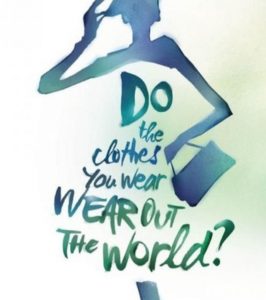
Well, the simple answer is that the world’s resources are not limitless and making clothes has an impact on the world around us. By resources, I include land, water, energy, chemicals, and transport and there will always be waste products, potentially pollutants that need to be dealt with. All the above resources are needed to make new clothes. The clothing industry uses approximately 20% of the world’s pesticides and insecticides. It is also the second most contributor to the pollution of clean water due to treating and dyeing textiles and as another example uses approximately 2,700 litres of water to produce enough cotton for one t-shirt according to the WWF.
The fashion industry has, in the past, driven the production and consumption of clothing purchases. Trends are set several seasons in advance, then shown off on the catwalks and copied by the High St very quickly. The media, in particular magazines, then advertise these trends as lifestyle choices and it is hoped we all aspire to have them. As fashion changes so quickly, people are expected to keep up, buying more and more to look good. Fashion items are also available now very cheaply from some low-cost retailers around. Their items are often made of cheap fabrics and staff are paid a pittance, working in poor conditions.

There is also very little real style advice alongside fashion, in terms of what looks good or not on different people. Not everything looks good on everyone. As a teenager I was caught up in this, with little money, I remember saving to buy some platform shoes that were 4 inches high! Quite honestly they were ridiculous on an already tall girl, making me taller than my Dad aged 14 years !!
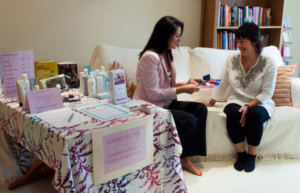
Now I know that style is an individual thing and some designs will suit us more than others. The most sustainable way to dress is to buy less but buy wisely and ensure you use everything in your wardrobe, not all the time obviously, but across all the different seasons, so you wear an item at least every year. Helping people buy wisely is what I do, in terms of giving guidance about suitable colours to wear considering a person’s skin tone and colouring; style tips in line with your body shape and other factors and using accessories which really can enhance a look and turn a casual outfit into something smarter.
Plus, it’s great to help people create outfits from what they already have in their wardrobe. Did you know that most people only use 20% of what they have in their wardrobes? The other 80% sit there unused, clogging up wardrobe space and making it harder to find clothes to wear and put together outfits….This is where recycling comes in, of which I am a great fan. If you’re not wearing it, recycle it so that those resources that made that garment are not wasted allowing someone else to benefit. So many people benefit from buying used or recycled clothing, whether from pre-loved or charity shops as well as online sites.

Another advantage for buyers of recycled clothes is that you can often get top designer brands for a fraction of their cost. Often designer brands are made from better quality fabrics too and made in a way to last. Online selling sites such as eBay, Vinted, or Shpock, etc. really are a win-win-win situation for the buyer, seller, and the environment.
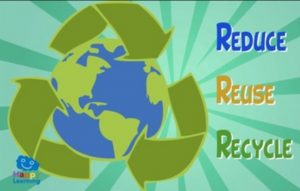
Another recycling idea I love is Clothes swap parties, where you can usually pick up a bargain or two. They are a great way to socialise with friends and I usually organise one or two a year. Any clothes left over, from the event, then get donated to charity. This is far more sustainable than buying anything new as no additional resources have been used. I’m currently supporting the local Women’s refuge as violence against women has risen during lockdown. My next Swap party is planned for April but I’m happy to take any donations from people locally now, including any clothes, kitchenware, and toiletries.

As well as sustainable clothing, there is also ethical clothing. There is a difference between the two, though they are linked and it’s good to do both. When we talk about being sustainable, we are referring to avoiding depleting natural resources and maintaining an ecological balance in the environment. Whilst ethical fashion concerns the morality of how clothing is made – the fabric used, the type of manufacturing processes involved such as using organic methods or not, how the workers were treated such as Fairtrade and whether animal parts were used, like fur or if they were tested on, i.e. cruelty-free.
I’m sure most people have heard about the plastic pollution in our oceans and are hopefully aware that many of our clothing items made from synthetic fibres include plastic. Every time we wash clothing items made from polyester, acrylic, and nylon, etc. plastic fibres are released, runoff in the wastewater, entering our rivers then reach the sea. There is evidence now that these plastic fibres are eaten by fish and enter our bodies through the food chain. Natural fibres, on the other hand, do not contain plastic so are preferred in some sense but natural fibres such as cotton, wool, and linen still require a lot of water, land, nutrients, and energy to be produced, so still have an effect on our environment.
One natural fibre that is regarded as very ethical and sustainable is bamboo. I have been buying more bamboo clothing for items that tend to be worn and washed a lot for e.g. socks and pants. I find they last longer and feel softer on my skin. Coincidentally I have some bamboo that grows in my garden and reaches over 10ft tall very quickly. This is one benefit of bamboo – it grows very quickly and also uses much less water to grow, saving valuable resources. Fabrics that use less water and produce less waste help preserve our environment.
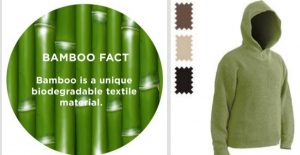
So, we are back to where we started. Recycled clothing really is the most sustainable as no new resources are used. We have come full circle. In fact, a circular economy is just what we want. We want our clothing and other products to be produced in a way that respects our environment and limited resources. We want our manufacturers to not only produce items sustainably and ethically but also to dispose of items responsibly. Plastic bottle banks abroad, that give you money back when returning them are a good example of this. Some companies here such as M&S do give you money back when you return items to them, which is good.
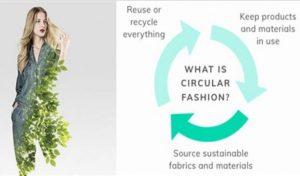
In terms of clothing, we should be aiming to make as much use of them as possible. If you’re not wearing certain clothes or they no longer fit, recycle them to others or use them for alternative purposes if worn out. My old socks, once darned to death get used for shoe cleaning. Clothes can also be cut up and a friend uses scraps of material for quilts and crochet rugs. I myself have been sewing together two tops, neither of which I wear much as too short and making one new unique “designer” top that I love and wear all the time. Getting creative is so much fun…
So, to summarise… reduce what you buy and buy wisely, a bargain in the sales is not a bargain if you never wear it, so find out what suits you best. Repurpose old items and recycle anything good quality you’ve not worn in over 2 years or bring to one of my swap parties 😊. Any new clothing should be as sustainable as possible, made of natural fabrics, produced using organic methods and renewable energy, and packaged in plastic-free packaging from an organisation that pays its workers a fair wage. Some companies are doing this but items do cost more and it is up to us to decide to shop this way or not. Our choices will determine our future as they affect our environment. Just as the past affects our present so the present will affect our future. We all need to think wisely about the future we want and shop responsibly.

Katie James is a Sustainable Stylist & Confidence Coach and is based in Bramley, Hampshire
www.ConfidentlyYou.co.uk

I was very happy to uncover this great site. I want to to thank you for ones time for this fantastic read!! I definitely savored every little bit of it and I have you bookmarked to look at new things in your site. Betsey Stearn Beekman